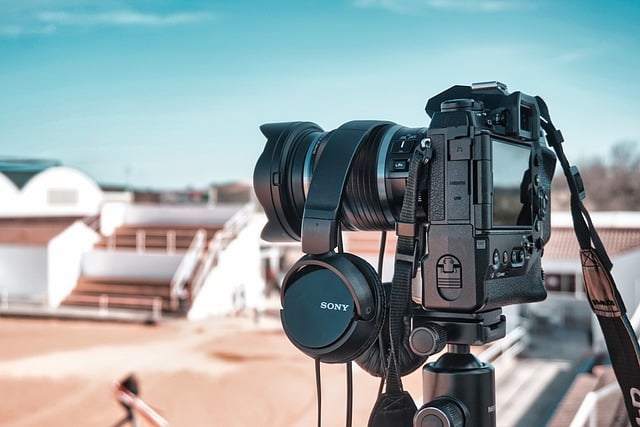Video compression techniques shrink file sizes without sacrificing quality, enabling seamless playback on devices like Android TV. Formats like MP4, H.264, and DivX offer diverse options, with DivX known for compatibility. Lossy compression reduces file size at some detail loss, while lossless compression retains all data but increases size. Choosing the right format depends on balancing file size and visual quality needs. For Android TV, DivX offers high-quality video in compact files, facilitating efficient storage and playback.
Video compression is an essential tool for optimizing file sizes without compromising visual integrity. This article explores techniques to compress videos effectively while preserving quality, delving into formats, codecs, and advanced methods like H.265/HEVC. We navigate challenges, from avoiding pixelation to segment encoding, and provide a practical guide on playing DivX on Android TV, ensuring an optimal playback experience. Discover best practices for achieving high-quality compression without sacrificing video integrity.
Understanding Video Compression: The Basics

Video compression is the process of reducing the size of a video file while preserving its key qualities. This is achieved through various techniques that eliminate redundant or less perceptible data from the original video. The goal is to create a smaller file that can be easily stored, streamed, or played on different devices without significant loss in visual integrity.
One popular and efficient compression standard is DivX, which offers high-quality video playback while maintaining small file sizes. This is particularly beneficial for devices like Android TV, where storage space and bandwidth are often limited. By understanding the fundamentals of video compression, users can choose appropriate settings on their Android TV to play DivX files seamlessly, ensuring a balance between file size and visual quality.
– Definition and purpose of video compression

Video compression is the process of reducing the size of a video file while preserving its key qualities. The primary goal is to create smaller files that can be easily stored, streamed, and played without sacrificing the original visual and audio integrity. This technique is essential in today’s digital era, where content consumption across various devices, including Android TV, demands efficient storage and transmission.
Play DivX on Android TV is a prime example of how effective compression can enhance user experience. By compressing videos without losing quality, it becomes possible to enjoy high-definition or even 4K content seamlessly on these smart TVs. Advanced compression algorithms analyze the video frame by frame, eliminating unnecessary data and reducing file sizes significantly while maintaining clarity and detail.
– Types of video compression (lossy vs lossless)

Video compression is a process that involves reducing the file size of video content while attempting to preserve its original quality. There are two primary types: lossy and lossless. Lossy compression techniques eliminate certain data from the video that human eyes might not notice, thereby achieving significantly smaller file sizes. This method is ideal for streaming and sharing videos on platforms like Play DivX on Android TV, where storage space and bandwidth limitations necessitate size reduction without noticeable degradation.
On the other hand, lossless compression retains all original data in the video, ensuring no quality loss. This type of compression results in larger file sizes but maintains every detail intact. It’s commonly used for archival purposes or when preserving the video’s integrity is paramount, such as in professional filmmaking and post-production workflows.
– Common formats and codecs (MP4, H.264, DivX)

Video compression is an art and science in today’s digital era. When it comes to formats and codecs, a few stand out as reliable choices without compromising video integrity. MP4 (MPEG-4 Part 14) is one such popular container that supports various codecs, offering a balance between file size and quality. H.264, another common codec, is known for its high compression efficiency while preserving detail—an ideal choice for streaming.
DivX, once a pioneer in video compression, still has its place, especially with the ability to play DivX on Android TV. This flexibility ensures compatibility across devices, making it a game-changer for those seeking seamless playback. Each format and codec has its strengths, catering to different needs, whether it’s small file sizes or maintaining top-tier visual quality.
Video compression, without sacrificing quality, is a powerful tool for optimizing video content. Understanding lossy and lossless methods, along with popular formats like MP4 and H.264, empowers users to make informed choices. Even on devices like Android TV, playing DivX files is now seamless thanks to advanced compression techniques. By embracing these innovations, creators and viewers alike can enjoy high-quality videos without excessive file sizes.
